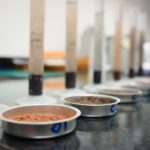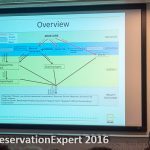A guest post by Graham Coleman. SOME OBSERVATIONS OF THE SPAB RESEARCH REPORT 2. THE SPAB BUILDING PERFORMANCE SURVEY 2016 INTERIM REPORT: 2017 Introduction: The report ‘The SPAB Building Performance Survey 2016 Interim Report: 2017’ was first made available last year. Having first taken a quick glance at its contents it became apparently clear there […]
SOME OBSERVATIONS OF THE SPAB RESEARCH REPORT 2. THE SPAB BUILDING PERFORMANCE SURVEY 2016 INTERIM REPORT: 2017
The Viscous fingering red herring

Viscous fingering and its misinterpretation Introduction. Chemical DPC’s have been used and misused for decades. There are very many reasons for this. However, now it’s come to building professionals raising the question; do chemical DPC’s work and is there such a thing as rising damp? This post doesn’t answer these questions; to ask them […]
UK Centre for Moisture in Buildings UKCMB

The UK Centre for Moisture in Buildings (UKCMB) Last Wednesday I was in London for the launch of the UKCMB. The launch was at the Roberts Building, University Collage London. About 100 interested parties were invited along to hear about the UKCMB and find out how they could get involved with its work. I was […]
Goodbye Mould and condensation – with Bpec training

The reason behind the course – it’s not just about mould and condensation. Mould and condensation go hand in hand. As an experienced damp surveyor many of the calls I receive are about mould. Its smelly, spoils decorations and can aggravate poor health conditions. Of course, as I’ve written before, much […]
Thermal imaging for damp diagnosis – basic competance required

Thermal imaging for damp diagnosis – basic competence …or, getting into building thermography – a review of the TCL (Thermographic Consultancy Ltd) category 1 training process. Thermal imaging is fairly new to me. I was introduced to the concept of thermal imaging for damp diagnosis in 2011, via the Property Care […]